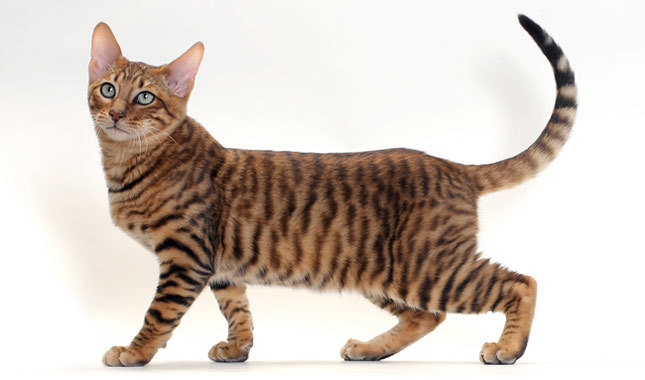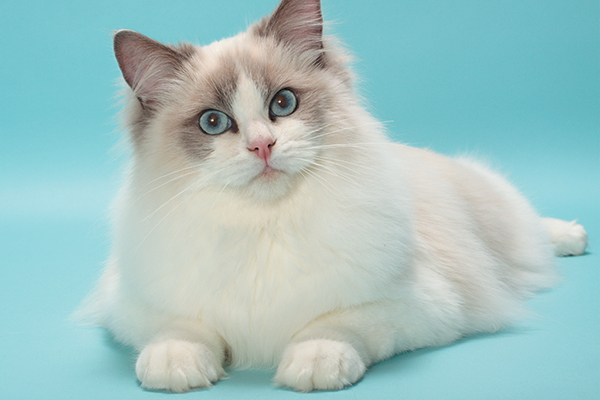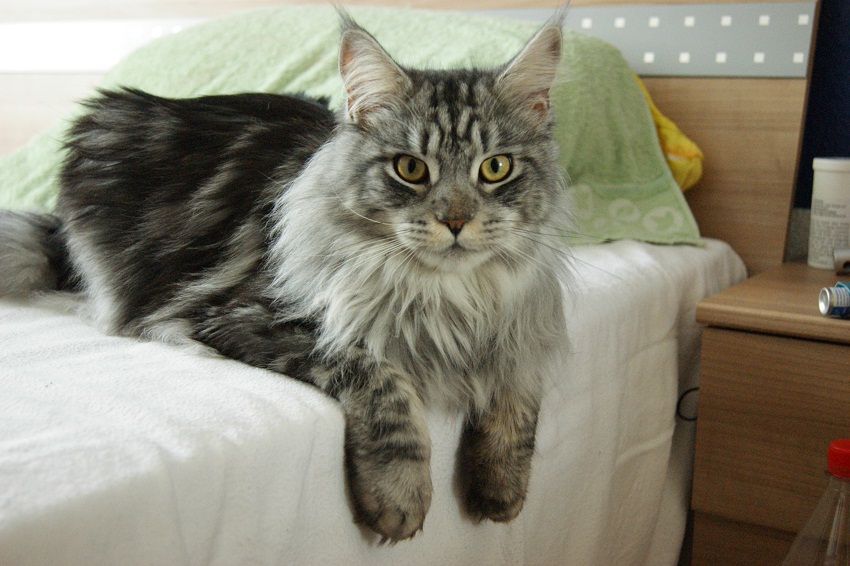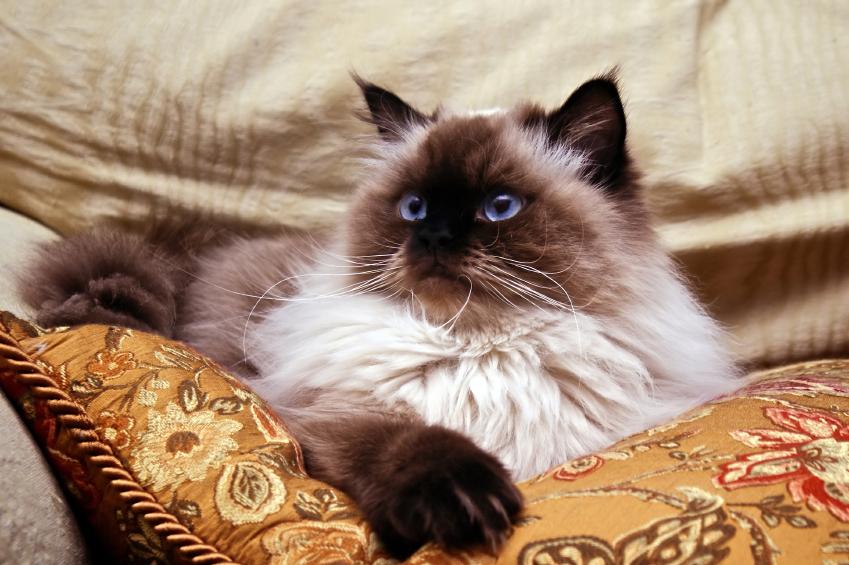Medium or large, the Bengal cats were developed by selectively breeding the Asian leopard cat’s hybrids. It takes its name from Felis bengalensis, which happens to be the scientific name of the Asian Leopard cat. The aim behnad its development was perhaps to create a feline similar to the ocelots and leopards, but with a friendly demeanor. It rosette pattern, similar to the markings visible on leopards, jaguars, and ocelots, gives it a regal and elegant appearance.
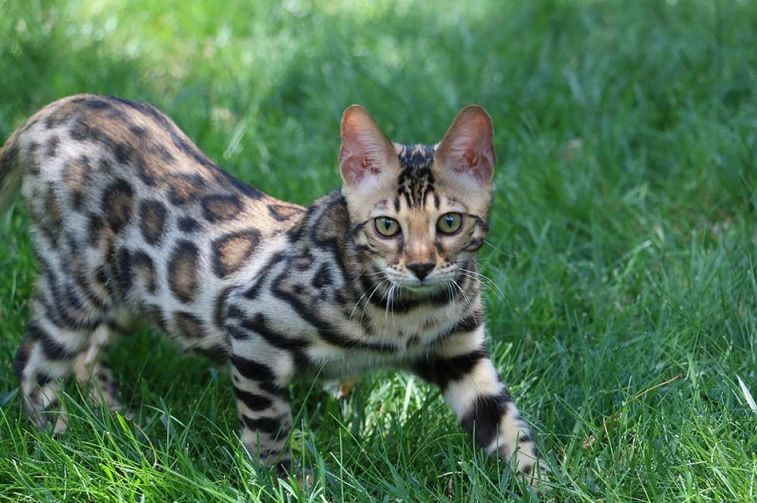
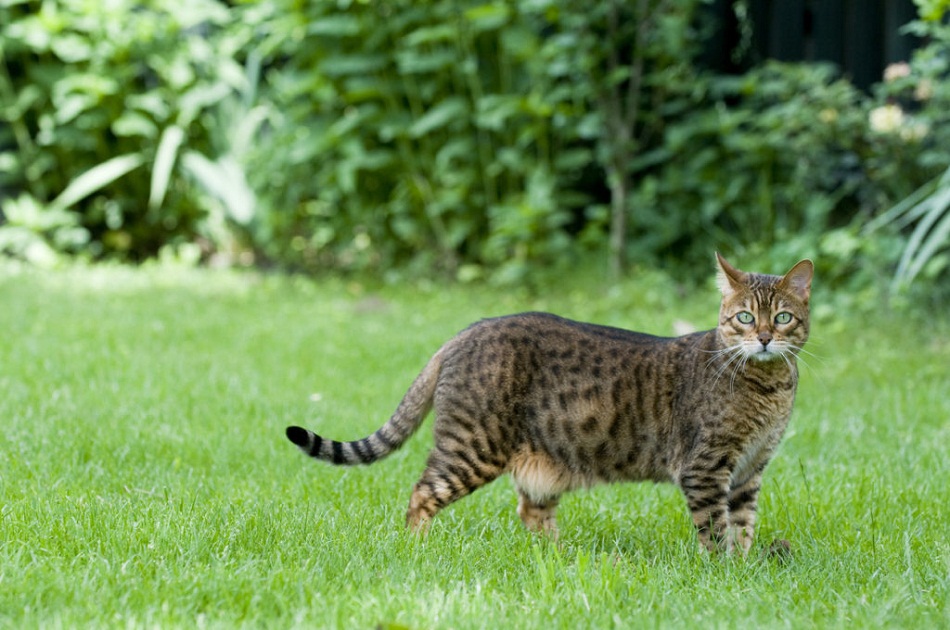
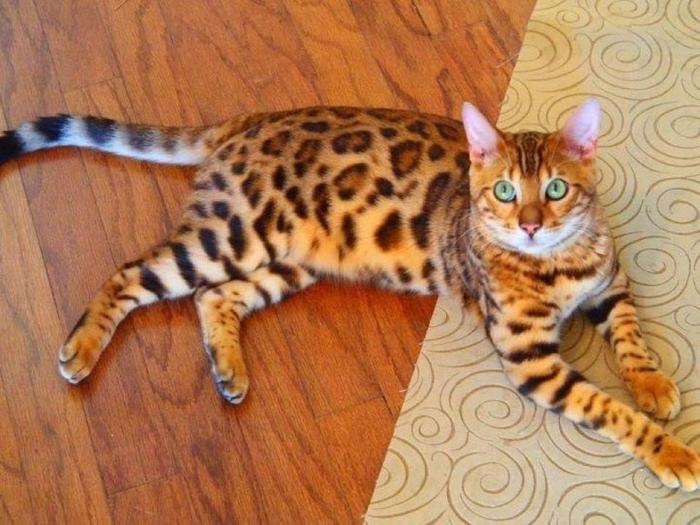
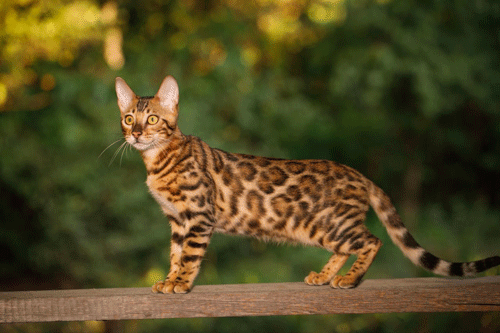
Quick Information
Physical Appearance & Size
| Body Type: | Medium to large |
| Physical Appearance (What does it look like): | Broad wedge-shaped head; medium-sized ears; large, expressive, oval eyes; muscular neck, medium length tail tapering to the end having a black tip |
| How big does it get (weight): | Males: 10 to 15 pounds; Females: 8 to 12 pounds |
Colors & Patterns
| Coat type: | Luxurious, short, soft (some might even have a glittery coat that shimmers in light giving a feeling of being covered with a dust of gold) |
| Color: | Brown, snow, bronze, golden, mahogany, copper, sepia (reddish-brown), silver, mink (greyish brown) |
| Eye color: | Bright green or blue |
| Pattern: | Spotted (large or small along with rosettes); Marbled (twisted or spiraling pattern or diagonal or horizontal lines) |
Other Characteristics
| Litter size: | 5 on an average |
| Average lifespan/How long do they live: | 10 to 16 years |
| Behavioral Characteristics: | Friendly, loyal, affectionate, devoted, playful |
| Lap Cat: | Yes |
| Shedding ( Do they shed): | Moderately |
| Vocalization: | Extremely talkative, meowing and purring most of the times which can be either soft and gentle or loud and noisy |
| Good with Children: | Yes |
| Is it hypoallergenic: | No |
| Country (Where do they come from): | USA |
| Competitive Registration/ Qualification: | TICA, FIFe, ACF, AACE, GCCF, ACFA/CAA |
History
There were a lot of speculations regarding the history of this breed’s origination, while most sources say that it might have evolved around 1889. Jean Mill, a Californian breeder, was however instrumental in the creation of this breed in the true sense. She had an Asian leopard cat (female) as well as a black tom (male) which coexisted and to her amazement even mated. She kept one kitten from the litter which was spotted and again bred her back with the tom (her father), the outcome being kittens with spotted and solid colorations. It was at this time that Dr. Willard Centerwall was conducting a breeding programme between the Asian leopard and domestic cats since the leopard cats were immune to feline leukemia. Ms. Mill was given some of Centerwall’s cats because of the latter’s illness. She bred them with various male cats one of them being a domestic shorthair (orange) and the other being spotted tabby (brown). The TICA was the first cat association to recognize it, giving it the status of experimental breeds, all because of Ms. Mill’s efforts. The present-day cats have no wild bloodlines and are developed by mating one Bengal with the other.
Temperament and Personality
- Active, alert and intelligent, they are a delight to live with as pets.
- Curious by nature, Bengals love to investigate every minute detail of their surroundings.
- Craves for attention and would mostly indulge in doing things that you do not want it to just because it wants you to focus on it.
- Loves to be busy, always moving about the house playing or being engrossed in something of the other.
- Enjoys climbing high and would get to the topmost points of your house in no time.
- Has an immense fascination to play in water and would often indulge in joining you when you are about to brush your teeth or take a shower.
- Desires for a cuddle on your lap but only when he is not engaged in any other activity, perhaps during bedtime.
- Possesses a mischievous nature and might often pick up your belongings and put them at a place out of your sight.
- Good with children preferably older ones and also share a comfortable rapport with cat-friendly canines and other felines.
- Might have a high prey drive and not for homes having smaller animals such as rabbits, guinea pigs, and hamsters.
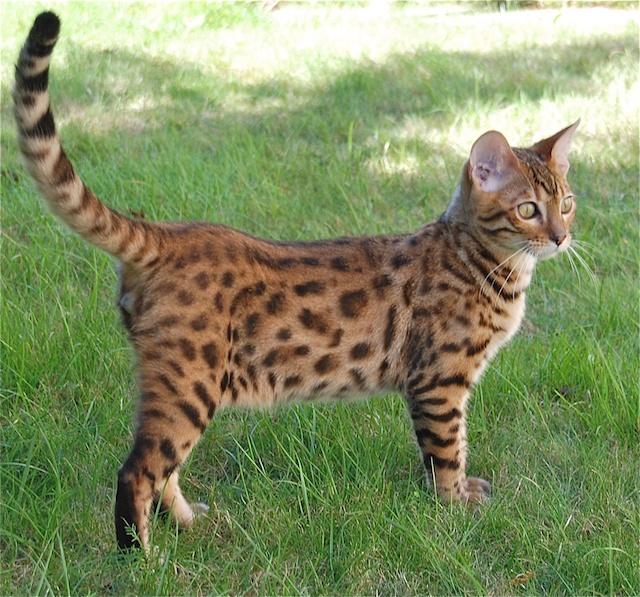
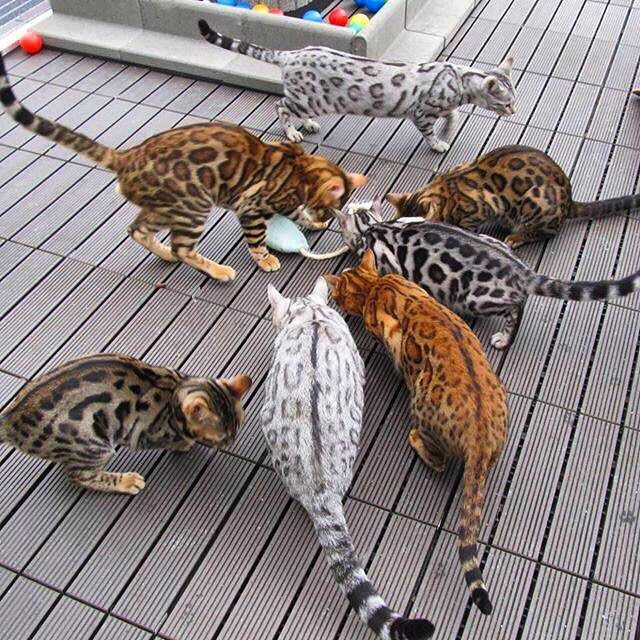
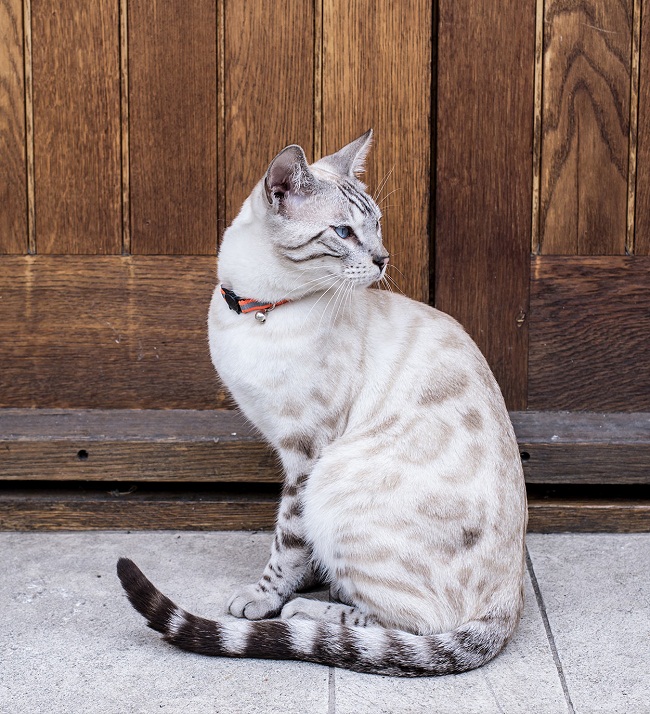
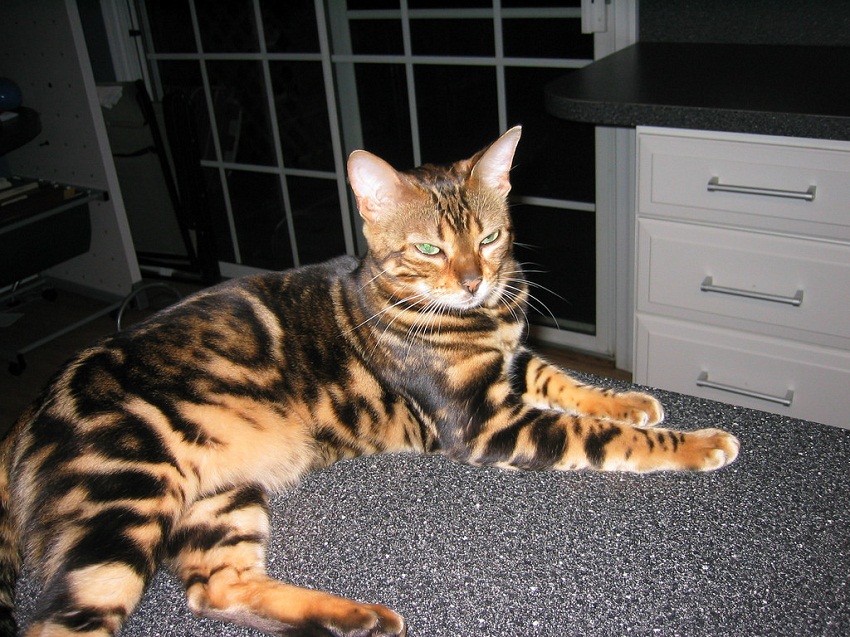
Who is the Bengal cat good for
- Families who would not mind a rambunctious talkative cat that is always up to something of the other.
- Households where a fast and agile climber, who could hardly stay on the ground is welcomed.
- Those on the lookout for a cat with intelligence as well as a royal, regal look.
Care
Since they are low-shedding breeds, a weekly brushing would be fine for them. You can brush them gently with your hand and only use a brush during the shedding season when there is excessive hair fall. Bathe it only when the need arises and considering your Bengal cat’s love for water, it would enjoy its bathing sessions. Brushing its teeth, cleaning its ears and eyes as well as trimming its nails are the other grooming requirements that must be followed on a routine basis.
Though the Bengals are thought to be a healthy breed, they suffer from certain conditions like autosomal recessive disorder (noticed in Bengals since 2011 resulting in blindness when the cats are barely 1 year old), hypertrophic cardiomyopathy, polycystic kidney disease, hip dysplasia, progressive retinal atrophy and patellar luxation.
Training
Intelligent and curious, training these cats would not be too much of a task, though you would need to command these mischievous felines in a firm way to get their attention towards you. Your Bengal might already be enjoying a game of fetch, and if it does not then, you can teach them how to do it. Choose a small area at first and take the object that he prefers the most. Call your cat loudly by its name and show him the treat you have in hand. Now loudly utter “Fetch” and drop the belonging on the ground. Once your cat runs to its toy and gets it back to you, say “Good fetch” or “Well done” and then offer the treat. If it holds the toy in his mouth and is reluctant to drop it then lure him with the treat again, and he would let go of the object at once. Repeating this time and gain would make you cat adept at the game of fetch.
Feeding
These active cats need to be fed appropriately with a good quality cat food. You can add homemade food in measured amounts to its diet after consulting a veterinarian like cooked turkey, beef, chicken that would make for a good protein source. Giving scrapes of cooked fish once in a while would also be fine. If your cat likes greens, then a morsel of steamed broccoli or asparagus would not be a bad option.
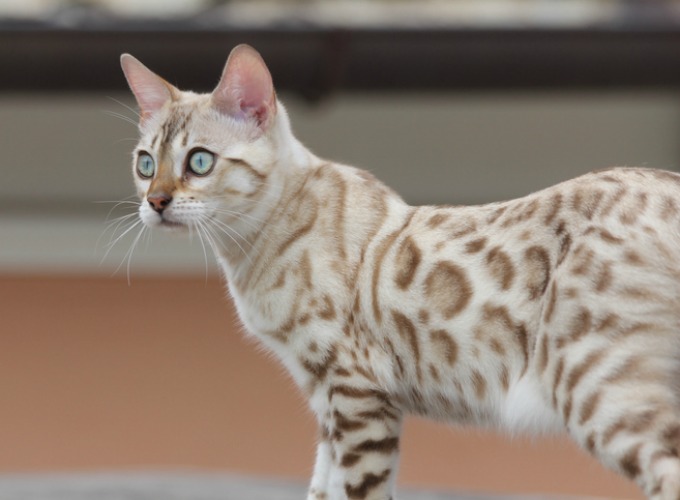
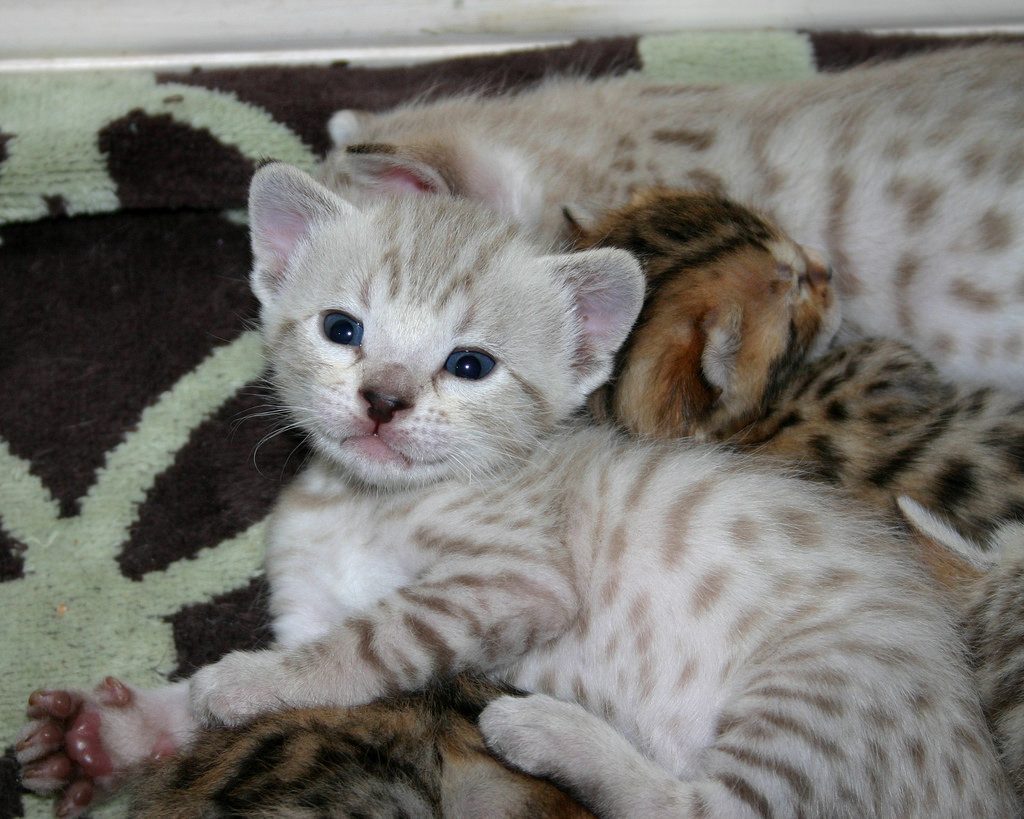
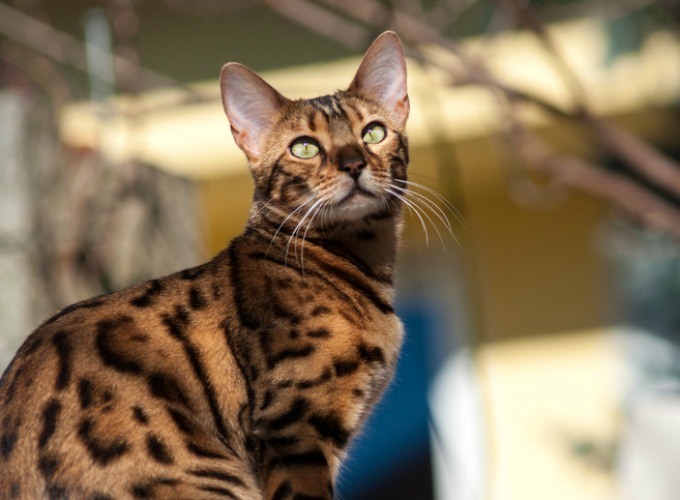
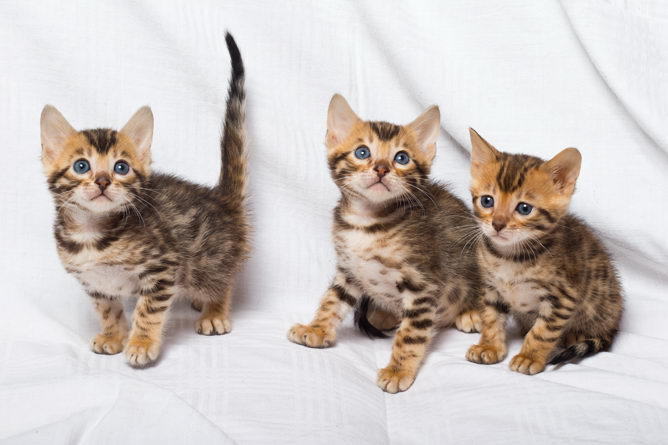
Interesting Facts
- These cats were such prized possessions that a woman of British origin has been known to have paid more than $50,000 to acquire a Bengal, thus giving it the nickname of the Rolls Royce of all felines.
- Being renowned for their jumping skills, they are known to have jumped to a height of about 4 feet.
- Six exotic Bengal cats worth approximately $12,000 had once been stolen from a breeder in Pasco, Washington when she was asleep.

